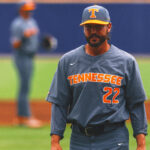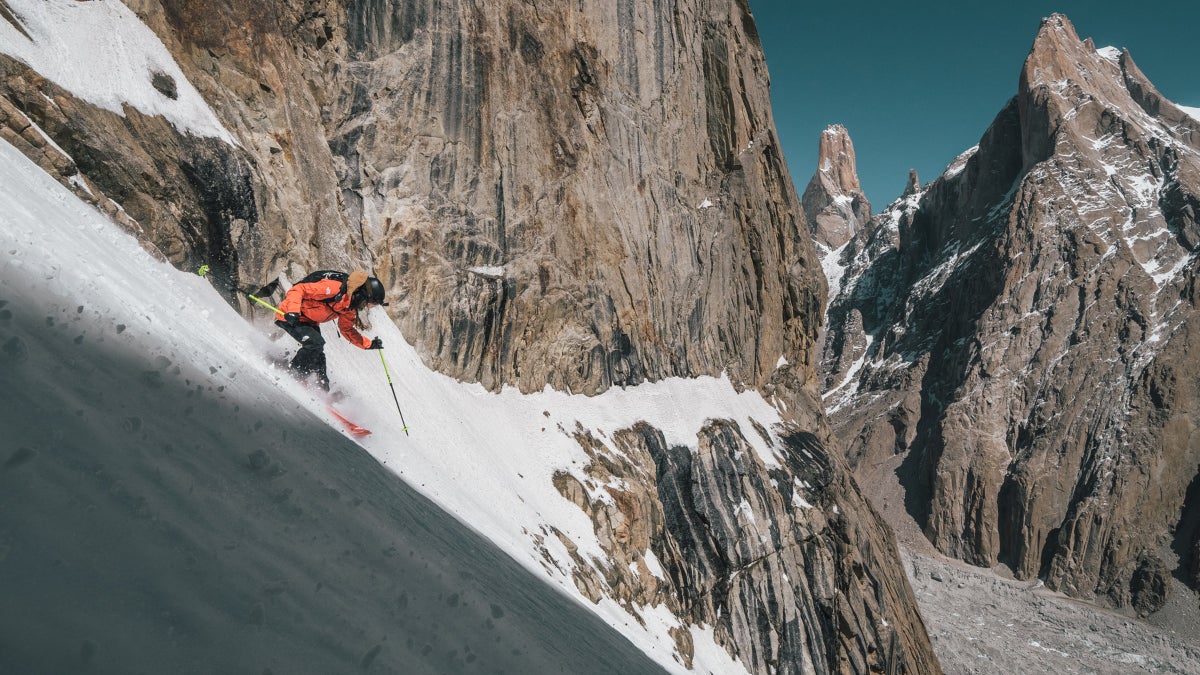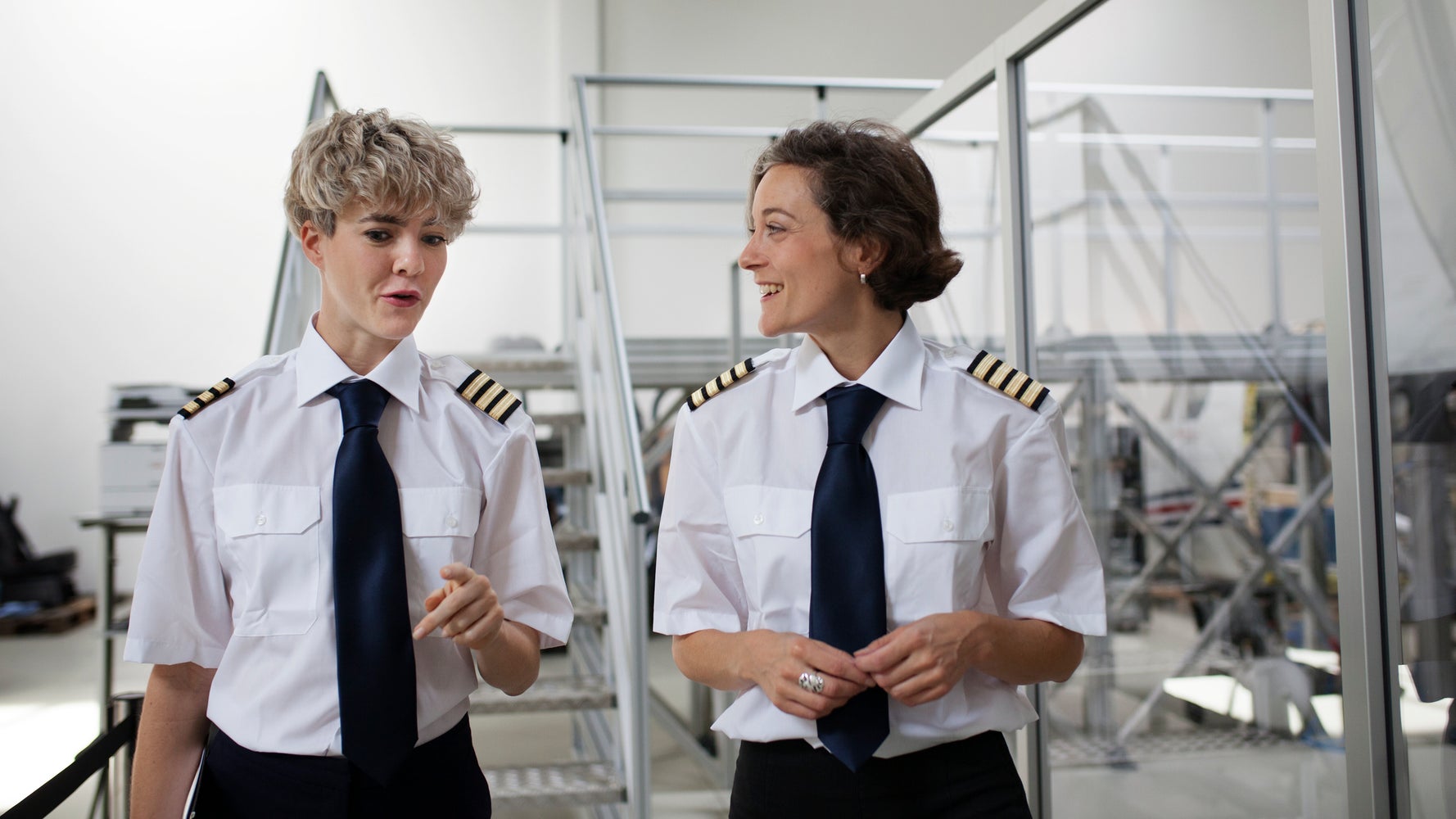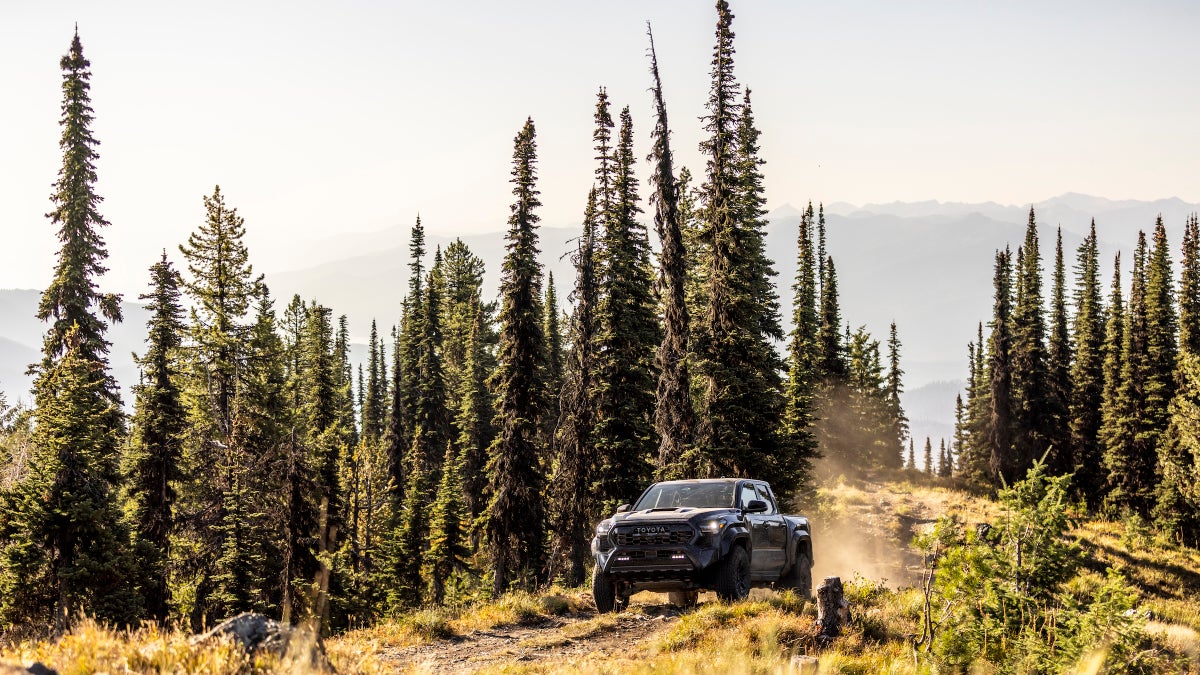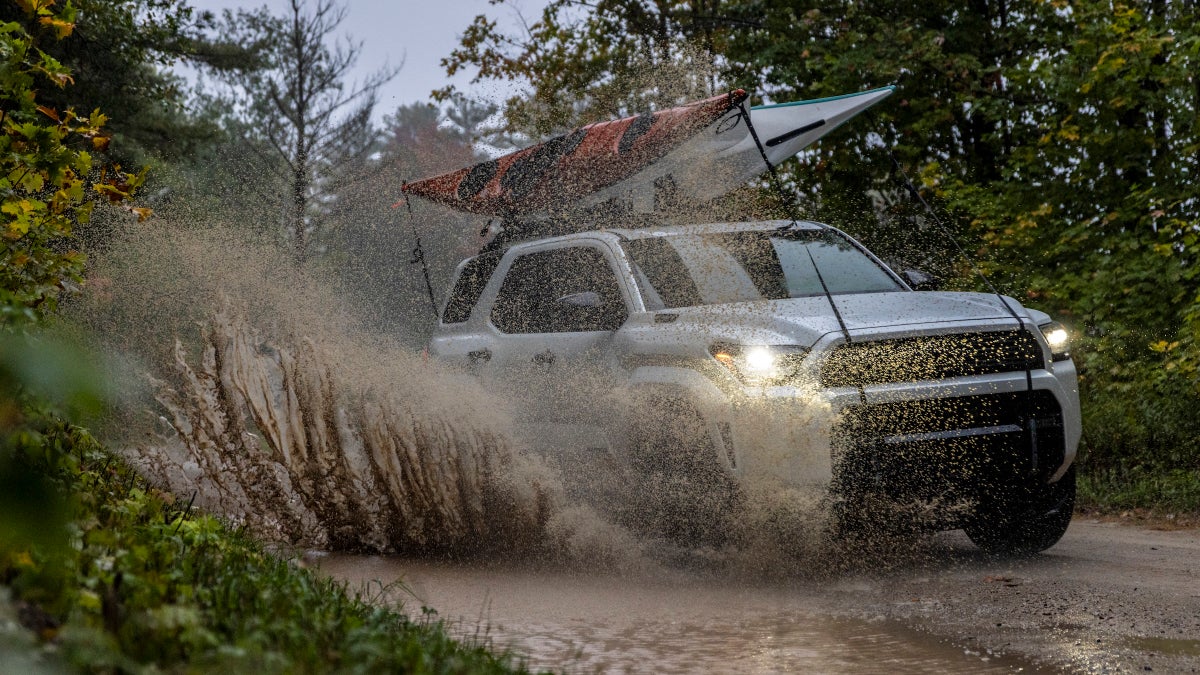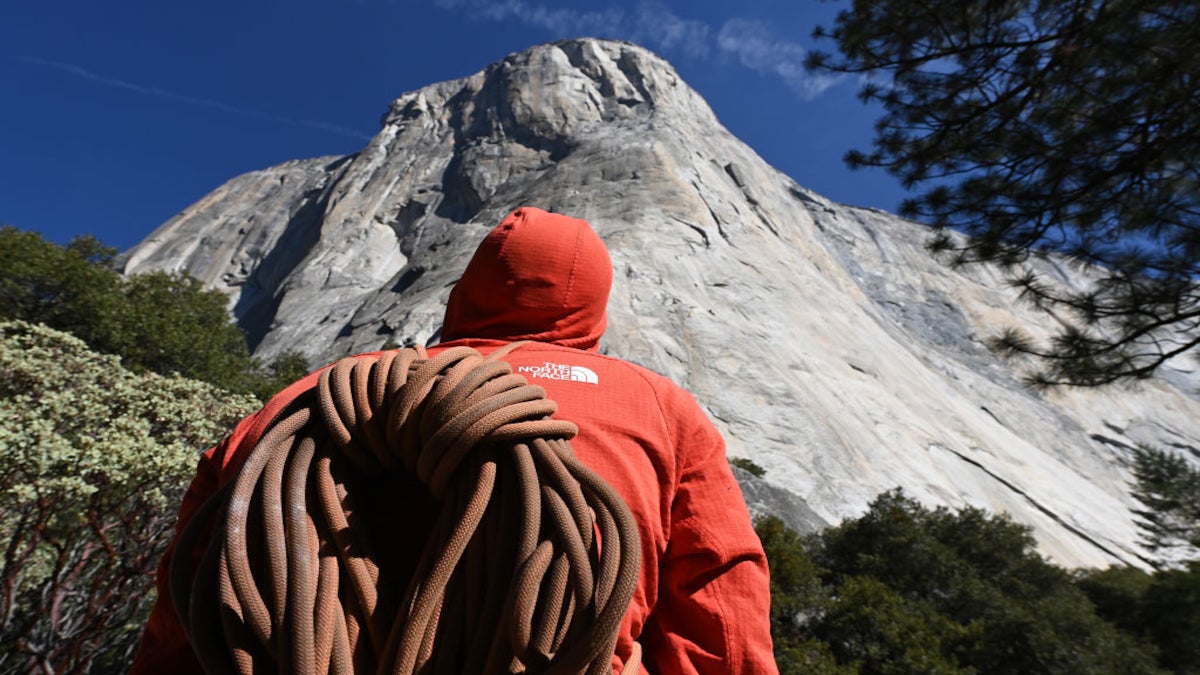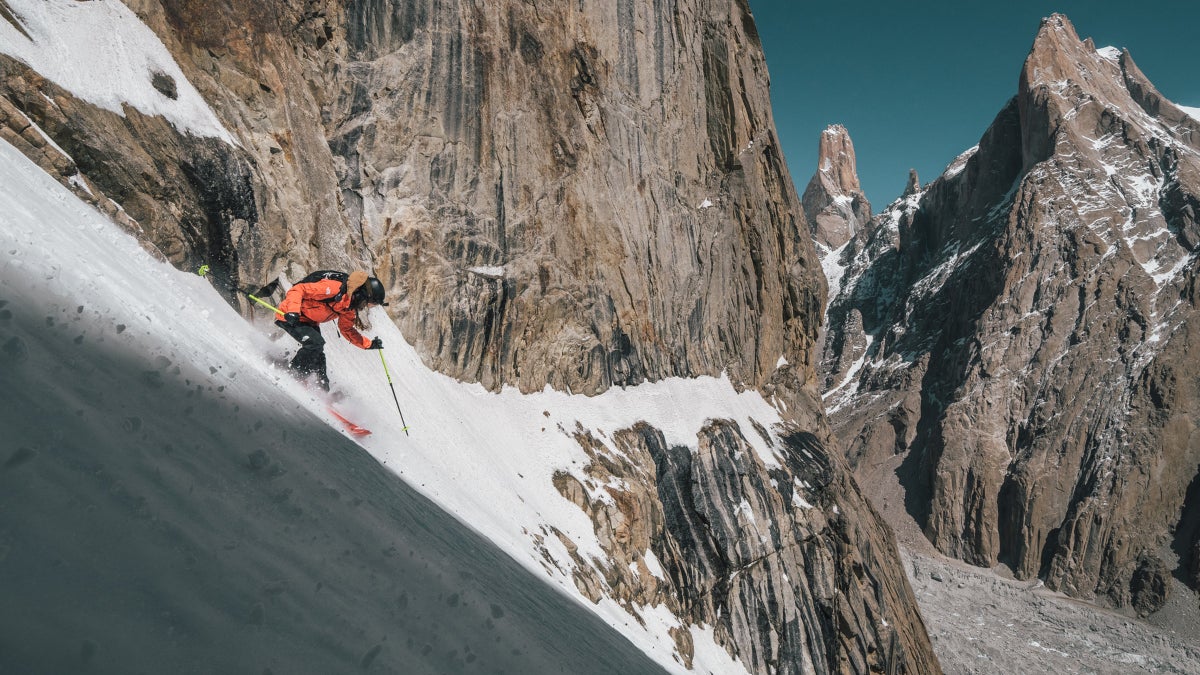
Ski mountaineer Christina Lustenberger has completed some of the most harrowing descents in history: Pakistan’s Trango Towers, Mount Cook/Aoraki in New Zealand, and the south face of Mount Robson in British Columbia, among others. Lustenberger, 41, describes what it’s like to ski a slope with deadly steepness.
I was skiing a classic freeride line on Cheops Mountain in Rogers Pass, British Columbia. It had a series of steep ramps above a tight and constricted area between rocks.
I did a few giant slalom turns at the top to control my speed, and then skied through the constriction. The snow at the bottom of it was much deeper than the snow at the top, and the change in depth caught me by surprise. My tips immediately dug into the deeper snow, and I did two full somersaults. The whole time I was crashing, I was thinking about the cliff band below me, and whether or not I’d fall over it. Luckily, I stopped. That was probably the closest call I’ve ever had.
The “No Fall Zone” as I define it, is terrain where the steepness and exposure is so dangerous that falling will either be fatal, or cause life-changing injuries. When you are skiing this type of terrain, you have to be extremely calculated with your decision-making and even every movement of your body. You have to analyze a wide range of external factors that can harm you, such as the surface of the snow and the potential for avalanches. When you’re in the No Fall Zone, you’re always trying to stay ahead of danger.
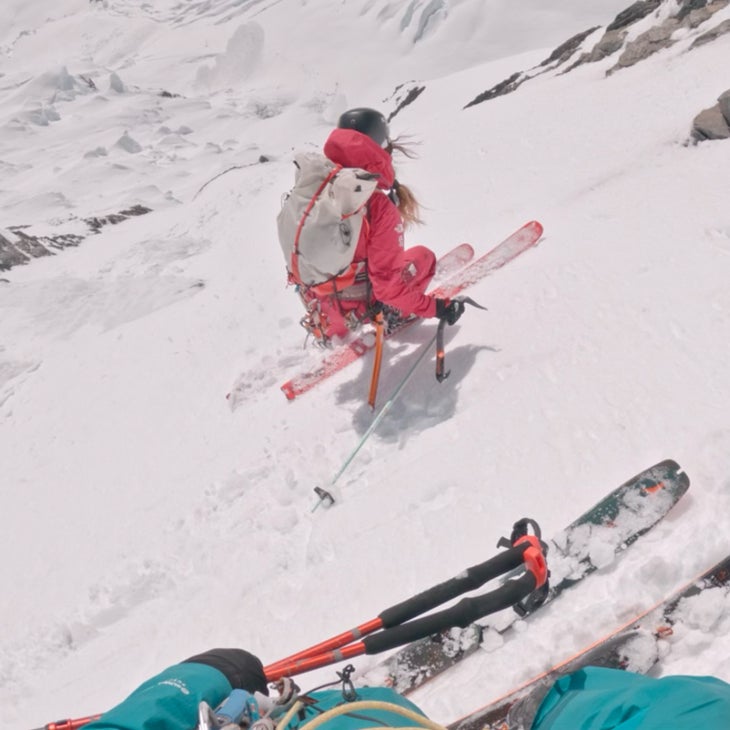
There’s a lot of preparation that goes into skiing these lines, and my partner, Gee Pierrel, and I do a lot of homework. We track the snowpack and weather conditions for sometimes years, months, and then days leading up to a trip. We climb the line and assess the snow, and make mental notes about where it changes. We analyze our gear.
I do a lot of preemptive mental preparation to visualize the terrain and the conditions so that I don’t get surprised. I ask myself: What time will I be skiing? What will the conditions feel like? The scariest moments are when I am shocked by something I hadn’t thought through. When things start to go sideways, you can feel the loss of control very quickly.
What I focus on during the actual skiing depends a lot on the snow. The line we skied on Mount Cook/Aoraki in New Zealand had an extremely firm snow surface. It was basically ice. All of my mental engagement went into my ski edges, one turn to the next. There was no room for mental distractions. But because the snow was so firm, it eliminated the need to think about other hazards like a sluff avalanche. Instead, I was just focusing on making sure every turn was exactly where it needed to be on the mountain. Then, I focused on the rappel points.
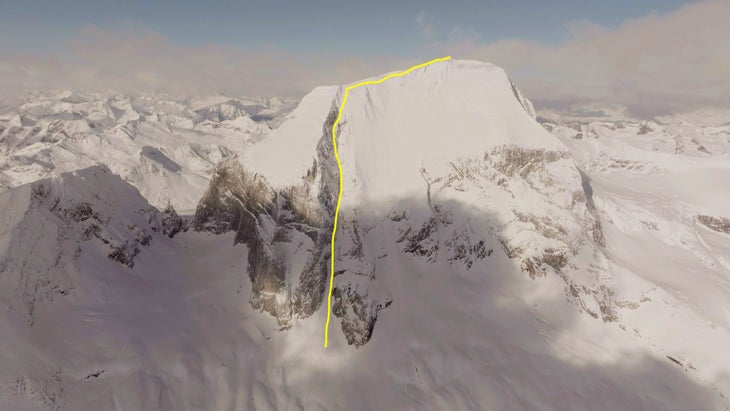
When we are skiing terrain with softer snow, my focus goes into the stability of the snow and whether or not there is surface movement. When you ski soft snow, you can kick up a sluff avalanche, and when it gets going down the mountain, it can hit you. It doesn’t take much force for sluff to buck you off of your feet. When I’m skiing these lines, I’m always asking myself, Where is the sluff? Am I to the right or the left of it? Where will it run? You can’t afford to get pushed around by falling snow when you are skiing terrain with extremely steep exposure.
When you’re skiing in the No Fall Zone, you’re essentially trying to stay in control in an uncontrollable environment. You can only do the best of your ability, given your training and equipment selection, and preparation. At the end of the day, there is still a huge amount of risk that you accept, and the consequences you are nudging up against. And if this suits your personality, then it is fair game.
The more time you ski this type of terrain, the more chances that something bad will happen. You lose friends. You witness accidents. I’m not ignorant of the risks I’m taking on. It weighs on me, but I still feel the drive and purpose to ski these lines and engage with the risk.
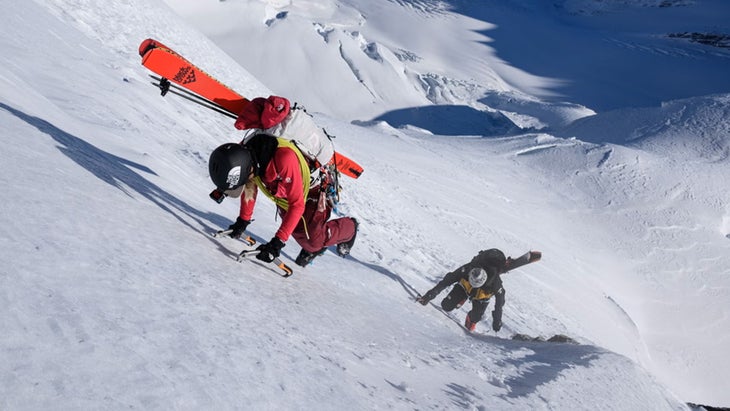
There is also fun and a feeling of thrill. I loved the feeling on Mount Cook of the mountain testing every skill that I’ve accumulated throughout my career. I could engage with the mountain and push back on it. When you come out on the other side of an experience like that, it is thrilling and extremely fulfilling.
There is also a rhythmic dance during the skiing that is part of a special mind-body connection. Even when you’re just skiing at the resort your mind is so engaged with where the next turn is going to be. You are thinking, Am I going too fast? Too slow? The dance between your thoughts and your body, no matter where you are skiing, is the same.
My crash on Rogers Pass was in 2015. After I crashed, I got back up and skied to the side of the cliff. I took a few minutes and got my composure, and finished the line. I don’t take near-misses lightly. I debriefed with the skiers I was with, and also with myself. I asked myself, How would I have done things differently?
It’s been ten years, but I’ve continued to reflect on that moment. It was a line I had already skied five or six times. It was familiar. When you start to have positive engagement with a line, you start to feel more comfortable. You spend that much time on a knife edge, you get accustomed to the exposure. I’ve realized that is when you can become complacent.
Skiing in the No Fall Zone over and over, you can feel this confidence grow. But I truly believe that there is no place for too much confidence or too much ego in this type of terrain. You always have to enter it being humble, knowing that you can always lose control.
As told to Frederick Dreier. This interview was edited for length and clarity.
The post What It’s Like to Ski in the No Fall Zone appeared first on Outside Online.




